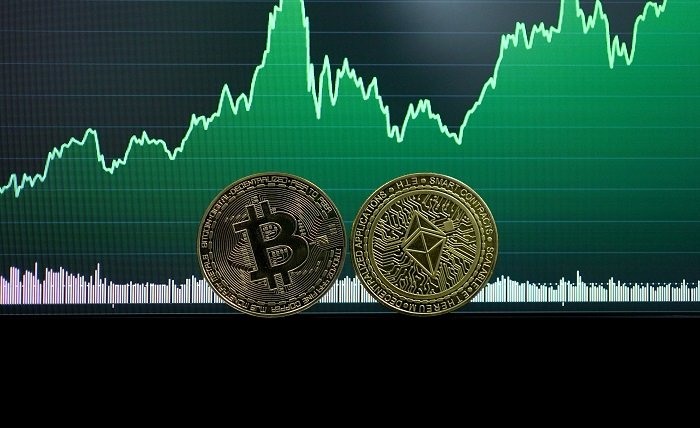Everyone’s heard it: Bitcoin is volatile. But what actually drives those sudden spikes and drops? The answer isn’t as simple as it looks. Sure, it’s one currency, yet its price isn’t just the result of one economy. Bitcoin lives in two realities: the global market, and dozens of local ones that operate under their own pressures.
So, when you’re looking at something like 1 BTC to USD, you’re not just checking a number, you’re glimpsing a complex system of cross-border forces, investor sentiment, regional laws, and even internet access. And that number? It shifts not only with global inflation or central bank decisions, but sometimes because of a policy change in a country most people aren’t even watching. That’s the thing about Bitcoin: it responds to chaos and confidence at the same time, often within the same hour.
Let’s walk through what’s going on behind the price, what shapes it from the top down, and what bubbles up from the ground level.
The Global Picture
Inflation and Financial Instability
When inflation kicks up, especially in places like the U.S., people start thinking differently about where to put their money. Dollars feel less stable, so alternatives like Bitcoin start to look attractive. It’s capped at 21 million coins. No central bank printing more. That alone makes it appealing during uncertain times.
We saw it in 2020 and 2021. Governments flooded the economy with stimulus money, interest rates dropped, and traditional currencies lost strength. Investors, both small and institutional, started piling into Bitcoin, hoping it would hold value better than fiat. In a lot of ways, it did. And while it’s not foolproof, its appeal during moments of financial pressure has remained strong, especially when confidence in national currencies takes a hit.
Institutional Influence
Then there’s the big money.
When companies like Tesla or investment firms grab hold of Bitcoin, the price reacts, often immediately. These moves don’t just shift numbers; they shift public perception. Suddenly, Bitcoin isn’t fringe tech, it’s part of mainstream finance.
But these same players can also pull out. When they do, confidence drops, and prices follow. It’s a double-edged sword: legitimacy and liquidity on one side, volatility on the other. One public statement or shift in holdings can rattle the market more than any single economic indicator.
Regulation at the Global Level
What governments say and do can change everything.
Take the U.S. legalizing Bitcoin ETFs. That wasn’t just a technical change—it made Bitcoin accessible to a broader audience. On the flip side, look at China banning crypto mining. That single policy decision sent a shockwave through global prices and forced a migration of miners to other regions.
These aren’t small levers. They shape markets instantly. And for investors, staying ahead of regulatory shifts has become just as important as tracking price charts.
Public Sentiment and Media Whiplash
A tweet. A headline. A news story.
That’s all it takes sometimes. Positive buzz, like new partnerships or blockchain upgrades, can cause prices to shoot up. But bad news spreads faster. Hacks, scams, legal trouble? The dip usually comes fast and hard.
It’s not just what happens, it’s how fast people hear about it. Social media makes the market twitchy. Sometimes, even false rumors can snowball into real sell-offs if enough people act on them.
The Local Layer
Economic Stress and Currency Collapse
In countries with unstable currencies or runaway inflation, Bitcoin stops being speculative. It becomes practical.
When the bolívar crashed in Venezuela, people turned to crypto just to preserve value. Greece had a similar moment during its debt crisis; concerns about bank closures led to a surge in Bitcoin interest. In those places, it wasn’t about getting rich. It was about staying solvent.
Bitcoin becomes a fallback when traditional banking loses trust. And unlike gold, it’s portable, divisible, and in many cases, more accessible through a smartphone than physical cash. That’s powerful in places where financial infrastructure is weak.
Arbitrage: The Price Isn’t Always the Same
Here’s something most people miss: Bitcoin doesn’t have one global price. Local exchanges often list different values. That creates arbitrage opportunities—buy in one country, sell in another.
Why the difference? It’s not just fees or currency rates. It’s local demand, regulation, and even internet availability. In one place, people might rush to Bitcoin because banks are frozen. Somewhere else, things might be stable, and the price reflects that.
These discrepancies are more than trading opportunities, they’re a snapshot of economic sentiment in real time.
Local Laws and Digital Access
Some countries embrace Bitcoin. Others try to block it. And that legal stance makes a difference.
El Salvador made it legal tender. Suddenly, adoption shot up. People started using it in everyday transactions. In contrast, countries with vague or restrictive laws, like India, tend to see price volatility based on legal news alone.
Then there’s infrastructure. Without reliable internet or digital payment tools, Bitcoin adoption is slower, no matter what the law says. That means fewer trades, lower liquidity, and sometimes, higher prices due to scarcity on local platforms. Tech access is often overlooked, but it’s a critical piece of the adoption puzzle.
Closing Thoughts
Bitcoin moves with the world, but it also shifts with the street. Global trends like inflation or regulation set the tone. But local crises, internet access, or sudden government decisions can pull the price in a different direction, fast.
So when you’re tracking Bitcoin, you’re really seeing the result of multiple systems clashing and cooperating. It’s not just market mechanics. It’s people, policies, pressure points, and choices, playing out in real time, all over the world.
